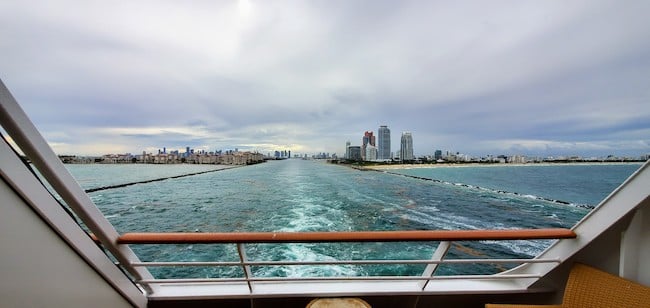It’s easy to see cruise lines selling ships and assume it’s simply because they need the cash – but that’s just a small part of what’s happening as ships that were carrying passengers just months ago head to new owners, and in some cases, shipbreaking yards.
Ships Being Sold
Some ships we’re not sure of, but modifications to scheduled sailings and other announcements give us clues that make continued service unlikely. For example, Princess recently announced that when cruising returns, their entire fleet will be Medallion Class (Ocean Medallion is a Princess technology platform) – even though Pacific Princes was never scheduled to have this work done.
In July 2020, several cruise lines announced they’d be shedding some tonnage. Below are some of the ships that are confirmed as being sold this month (and in one case, in June) – but many others are rumored to be on the way out. We’ve included the year launched next to all ship names.
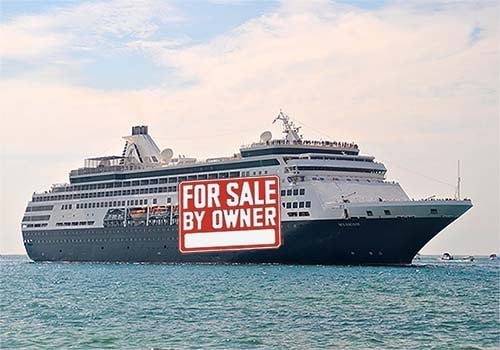
Holland America Line
- Amsterdam (2000) and Rotterdam (launched in 1997) were sold to Fred. Olsen Cruises, a privately held line based in the UK. Fred. Olsen will refit the ships, change their names, and put them into service in 2021.
- Maasdam (1993) and Veendam (launched in 1996) were sold to an unidentified buyer.
Carnival Cruise Line
-
Carnival Fantasy (1990) and Carnival Inspiration (launched in 1996) were sold for scrap.
Pullmantur
- MS Sovereign (1988) was sold for scrap. This was originally Royal Caribbean International’s Sovereign of the Seas, and many consider it the first “mega-ship”.
- MS Monarch (1990) was sold for scrap.
Costa
- Costa neoRomantica (1993) was sold to Cyprus-based Celestyal Cruises and will be transferred in August.
- Costa Victoria (1996) was sold to Genova Trasporti Marittimi (this happened in June 2020) and is expected to be scrapped.
Why Are Cruise Line Selling Ships?
Certainly, cruise lines are hurting for cash right now. A number of stock offerings, loans, and other complicated financial tools are what keep them afloat until sailings start again and revenue picks up. Any way to add cash to their books is helpful – and when valuable assets aren’t being used, why not turn them into money?
The selling of these ships, and those yet to be announced, is more complicated than that, and is revealing of cruise lines’ expectations not for when cruising can start again, but for when the industry will really pick up steam.
Vessel Operating Costs
In addition to cruise lines varying quite a bit from one to another, individual ships, even within the same cruise line can vary in size – and of course age. While there are many perfectly serviceable (and very nice) ships that have been sailing for a quarter of a century, even when well maintained, their hull designs, propulsion systems, and other critical infrastructure aren’t nearly as efficient as newer vessels. This leads to much higher operating costs. If you had two cars and were short for cash, would drive around the 40 year old van, or the five year old sedan?

Passenger Capacities
Not all newer ships are larger ships, but it’s certainly true that there aren’t any 20 year old ships that carry 5,000 passengers, and even with more efficient technologies, operating one ship to carry 5,000 passengers is much more profitable than operating two ships that each carry 2,500. If social distancing is required for some time, this impact is even more pronounced, especially for contemporary lines that operate with tighter passenger:space ratios.
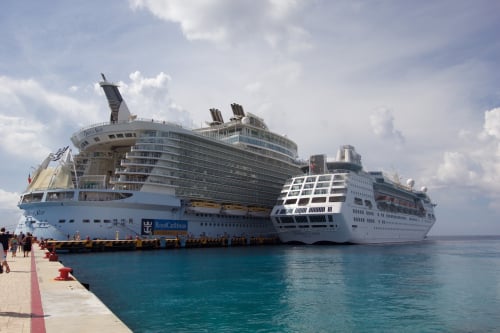
Demand for Cruises
Adding to the above consideration of passenger capacities on more tenured vessels, there will likely be reduced demand when cruising returns – at least for a time. If a cruise line suspects they’ll only be operating at 70% capacity, it’s far more logical to operate seven full ships than it is to operate ten ships at 70%.
Attrition – They Were Going to be Sold Eventually
This might be one of the most telling factors. Ships don’t sail forever, especially not under big name cruise lines. It’s not unusual for a ship to be sold after more than 20 years of service – even in the best of times. The average age of the ships we listed previously? Over twenty-five years old. It would seem quite likely that in the next couple of years, many, if not all of those ships would have been sold, and if lines don’t plan on needing the capacity, then there is no reason to wait until later to sell the depreciating assets.
You can read more about the lifecycle of ships here: Dry docks, constant maintenance, and retirement. The aging process of ships.
More Cruise Ships Will Be Sold
The six ships falling under the Carnival Corporation umbrella (all the ones we listed except for Pullmantur’s Sovereign) represented less than 6% of the company’s fleet. Royal Caribbean hasn’t sold any ships yet, save for Sovereign and Monarch, as Royal Caribbean Group owns 49% of the Spanish line Pullmantur. Even counting those, it’s shed less than 4% of the fleet.
A 4% or 6% reduction in demand over the next couple of years seems optimistic at best, and the third largest cruise company in the world, Norwegian Cruise Line Holdings hasn’t announced any sales so far.
Which Ships Will Be Sold Next?
Ultimately, we don’t know, so what you’re about to read here should be taken as only slightly better than guesswork. Disclaimers out of the way, here are a few ships we expect to say goodbye to – at least in the sense they’re not likely to stay sailing with their current lines. We’ve again put their ages next to their names.
- Norwegian Sun (2001) – She’s not the oldest in NCL’s fleet, that would be Norwegian Spirit (1998), which was just refurbished in January 2020. Norwegian Sun is sister-ship to Norwegian Sky, which CEO Frank Del Rio was excited to put a lot of work into last year – something we discussed when we interviewed him on the podcast and saw for ourselves in the summer of 2019. With so many of the Norwegian ships being of a newer vintage and style, flaunting megaship features, it wouldn’t seem shocking to see the sun set on Norwegian Sun.
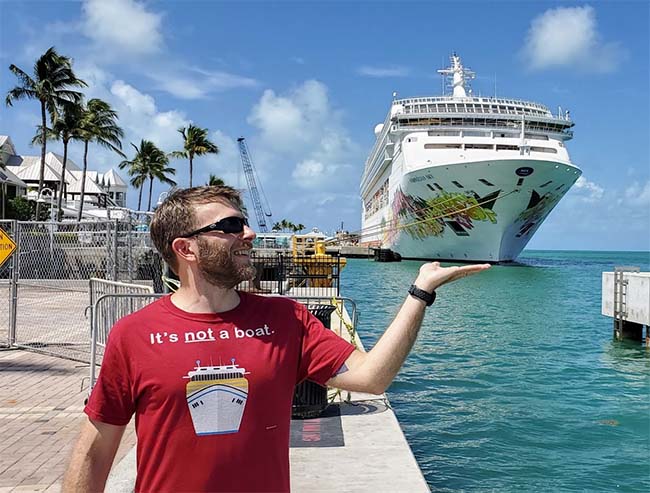
Billy in Front of NCL Sky in Key West After her 2019 Refurb - NCL’s Pride of America (2005) – Reports of Pride of America’s demise have been greatly exaggerated for years – including just now. This one doesn’t quite fit on the list, as we actually think she could stick around with NCL, but with a different style, flag, and deployment. Guests seem to like the only US-flagged cruise ship in the world and her all-Hawaiian sailings, but this also makes her incredibly expensive to operate, leading to our speculation that she could be destined for something different.
- Empress of the Seas (1990) – We enjoyed sailing her to Cuba a few years ago, and she is an lovely ship. Despite much work put into her after being moved back into the fleet from Pullmantur specifically for Cuba cruises, she’s the smallest in the fleet and really doesn’t match the Royal Caribbean brand in terms of her offerings. The only reason to hold onto her would be in case Cuba cruises can resume, since only smaller vessels fit into Havana’s cruise terminal, but that harbor is being redesigned, so this will be a non-issue at some point, making Empress an unnecessary part of the fleet.
Update: In December 2020 Royal Caribbean announced Empress of the Seas and Majesty of the Seas would be leaving the fleet.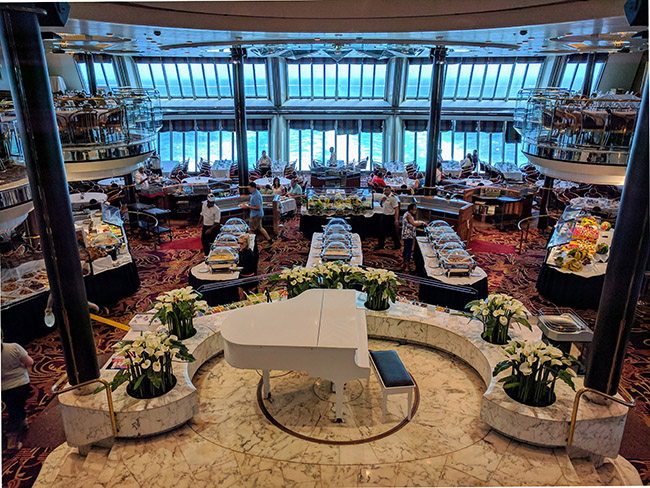
Empress of the Seas Dining Room from our Cuba Cruise - Carnival Ecstasy (1991) – Every ship has her fans, but this 29 year old ship doesn’t offer any distinct advantage compared to other vessels in the very large fleet, which has several new ships slated in the coming years. Further, aside from her sister ship Sensation, she's the last sailing Carnival ship without azipods, which make ships easier to maneuver (and often negates the need for tugboats).
- Carnival Fascination (1994) & Carnival Imagination (1995) – Fascination and Imagination were both put in long term lay-up this month, which means they left them without normal crew, mechanical components shut off, fluids drained, etc. Carnival clearly doesn’t feel these ships will be needed anytime soon, which begs to question if the line feels they’ll be needed in another couple years – which we doubt. In our experience, Imagination seemed outdated in form when we sailed her...14 years ago.
Update: In September 2020 Carnival announced these ships were sold and taken out of the fleet.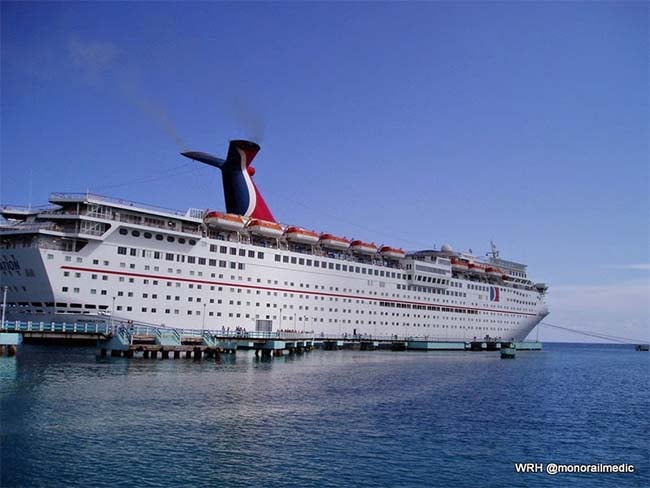
Carnival Imagination in 2006 - Pullmantur’s MV Horizon (1990) – Sadly, the reason I suspect this ship is done for is because I suspect Pullmantur is done for. The Spanish line is 49% owned by Royal Caribbean Group, and for years operated as a somewhat second-class operation, snatching up older ships from Royal and others, with service in Europe and South America. When the Brazilian economy turned south in the mid 2010’s Pullmantur pulled out. They’ve been bleeding money for a while, recently filed for Financial Reorganization under Spanish insolvency laws, and technically has only one ship left.
- Pacific Princess (1999) – As mentioned earlier, this ship was not slated to get the Ocean Medallion updates, and now Princess says the whole fleet will be Medallion Class when cruising resumes – so that doesn’t look good. Pacific is an R Class ship (originally from now-defunct Renaissance cruises) and while that class of ship remains popular, in part because of a very forward thinking design, the 30k GT 688 passenger ship doesn’t fit with the rest of the Princess fleet. It’s also worth noting that Princess has taken the biggest image-hit in 2020, so it’d not be shocking if the line sees demand sink. Conversely however, Princess has a loyal following, and many past guests aren’t likely to be deterred. Either way, we suspect we’ll see Pacific Princess go elsewhere soon.
Update: In January 2021 Princess announced Pacific Princess was being sold to Azamara Cruises.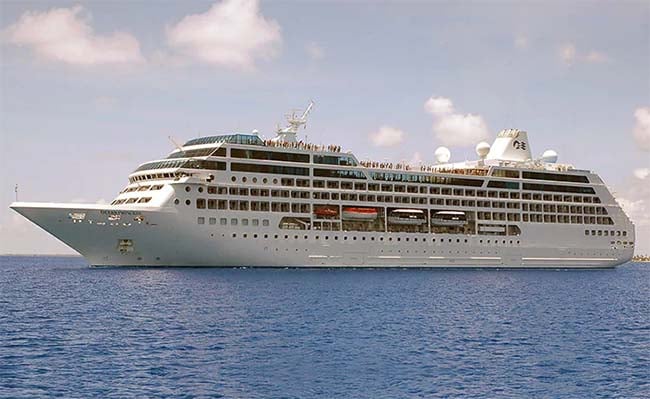
Pacific Princess
A Sad but Necessary Farewell
Ultimately there are many reasons for ships being sold off - and we’ve just touched on some of them. Keeping large fleets of aging ships that are costly to run, while demand is low just doesn’t make sense - especially when some of the vessels simply don’t match today’s brand image for these lines.
Cruise lines will emerge leaner from the current crisis by shedding tonnage – even if they’re ships many of us have fond memories of. The most disappointing part of these changes is how many vessels will go straight to shipbreaking yards to be sold for scrap, whereas in better times, they may have made it to other cruise lines and carried guests for years to come. Ultimately though, these changes are just part of what will make the future possible.
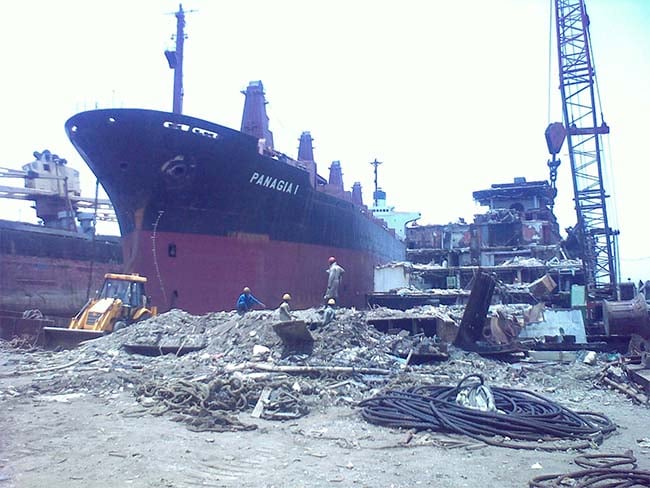
In a way, the end of these ships’ journeys are like the end of a cruise – all but photos may have passed, but we know that soon we’ll have other ships to sail, and when we do, we’ll leave the embarkation port in our wake as new memories are made.
